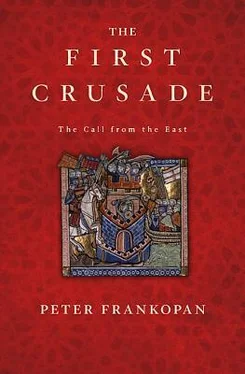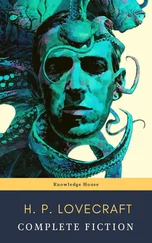By the start of the 1090s, however, Alexios could do little to prevent his position coming into question. It was becoming increasingly apparent that Alexios had steered the empire backwards. Scarce resources had been all but exhausted, with tax burdens leading to rebellion in places like Crete and Cyprus that could evade the fading grasp of Constantinople. The grant to Venice had antagonised too many, with properties given to the Italian traders taken from private individuals and from churches who were not only deprived of compensation, but also the right of appeal. 37
Yet nowhere were Alexios’ limitations clearer than in Asia Minor, where the emperor’s attempts to reverse Turkish advances had proved woeful. Attempts to recover the coast had failed completely and efforts against Nicaea had been embarrassingly ineffective. As Alexios’ reign began to look like a disaster, minds inevitably turned to the alternatives.
Remarkably, the efforts to replace the emperor did not come from the most obvious sources – those who had lost status and position as a result of the Komnenoi coup in 1081, or landowners in Asia Minor whose properties had been lost to the Turks or were under threat. Nor did it come from those whose prospects had been dented by Alexios’ predilection for promoting outsiders to important positions in Byzantium, as articulated darkly by one author offering advice to the emperor in this period: ‘whenever you honour a stranger coming from the rabble [of foreigners] by naming him as primikerios or as a general’, he wrote, ‘what possible position can you give to a Roman which is worthy? You shall make him your enemy in every way’. 38In fact, the bitterest opposition to the emperor came from those who had been his strongest supporters: his own family.
Matters reached a climax in the spring of 1094 when Alexios prepared a major expedition to reinforce the north-western frontier, following repeated Serbian incursions into Byzantine territory. This was the final straw. With Asia Minor in tatters, the decision to focus on an outlying area of limited strategic importance appeared to show a profound lack of judgement. It provided confirmation, if confirmation were needed, that the emperor needed to be replaced.
Reports of misgivings about Alexios reached the ears of his nephew John Komnenos, who had recently been appointed governor of Dyrrakhion following the recall of John Doukas. Yet rather than warn his uncle about the rumours, John presented himself as a possible successor. It was a position he had become used to in the 1080s when he had been offered as a suitable match for the daughter of Henry IV of Germany during discussions to seal the alliance against the Normans. 39But the coronation of Alexios’ eldest son, John II Komnenos, as co-emperor alongside his father in the autumn of 1092 dealt a blow to John’s hopes of succession. 40When the archbishop of Bulgaria, Theophylact, informed the emperor about his nephew’s plot against him, John was summoned and put in his place by Alexios. But although the matter was swiftly resolved, the affair revealed that even some of his own family had come to believe that Alexios was living on borrowed time. 41
John’s ambitions were part of a wider movement in Byzantium and there were plenty of other candidates to challenge the emperor. One was Constantine Doukas, the son of Michael VII, a young man with an impeccable pedigree but a limp character, and prone to bouts of ill health. Alexios had watched him carefully after taking power, aware that he was a potential rival to the throne, and to secure his loyalty had arranged Constantine’s betrothal to his eldest daughter, Anna Komnene, soon after she was born in December 1083. 42If reports that spread throughout the empire and beyond are to be believed, this union was not going to produce an heir: Constantine had apparently been castrated by Nikephoros III Botaneiates in 1078. 43
After Constantine showed little appetite for insurrection, attention fell on another man whose breeding was matched by his character. Nikephoros Diogenes was the son of Romanos IV, who had been humiliated at Manzikert in 1071. Along with his younger brother, Nikephoros had also been watched closely by Alexios as he grew up. The two boys were like lion cubs, says Anna Komnene, the emperor nurturing them as if they were his own children. He never had a bad word to say about them, and consistently looked to their best interests. Where others might have viewed the Diogenes boys with suspicion, reported Anna, Alexios chose to treat them with honour and affection. That, at least, is what the emperor’s daughter says. 44
Nikephoros now emerged as the strongest contender for the throne. Unlike Alexios, Nikephoros was ‘ porphyrogennetos ’ – meaning, literally, ‘born in the purple’, the designation given to all children of ruling emperors who were born in the porphyry chamber of the imperial palace. He also possessed strong personal qualities: natural charm, a magnetic character and good looks. Even Anna Komnene was impressed: ‘He was physically strong and boasted that he rivalled the Giants; a broad-chested, blond man, a head taller than others of his generation. People who saw him playing polo on horseback, shooting an arrow or brandishing a spear at full gallop stood open-mouthed, almost rooted to the spot, thinking they were watching a genius never seen before.’ 45
As the emperor embarked on his campaign in the Balkans in the summer of 1094, Nikephoros decided to take the initiative. Resolving to murder Alexios in person rather than delegate the task, Nikephoros approached the imperial tent one evening with a sword concealed under his arm. But he could not seize the moment, put off, it was said, by a young girl fanning mosquitoes away from the sleeping emperor and the empress who was accompanying Alexios on campaign. Nikephoros was thwarted again soon after, when he was challenged by a guard who saw him carrying a weapon, despite being ostensibly on his way to bathe. 46
Informed of this suspicious behaviour, Alexios asked his brother Adrian, the military commander in charge of the western armies, to intervene quietly, fearing that a public confrontation would further weaken his position. Yet Adrian knew more about Diogenes’ plans than the emperor realised and returned claiming to have found out nothing about the supposed conspiracy. 47The emperor now resorted to more blunt measures and after being arrested and tortured, Nikephoros confessed all.
When he discovered exactly who had been implicated in the conspiracy, Alexios was dumbfounded. 48They included both the former empress Maria, ex-wife of Michael VII and Nikephoros III Botaneiates, who had once been so close to Alexios, and Michael Taronites, the husband of his sister Maria Komnene. 49Nikephoros had also won the support of leading members of the senate, senior army officers and influential aristocrats. 50They are not identified by name in the Alexiad , which provides the main account for this period, curtailing the list of conspirators in a diplomatic lacuna rather than recording the embarrassing extent of the plot. Nevertheless, it is possible to establish some of the conspiracy’s leading supporters. Chief amongst them was Alexios’ brother Adrian.
The commander of the empire’s western armies was a prize asset for Nikephoros. The men were brothers-in-law through Adrian’s marriage to Nikephoros’ half-sister, and the fact that Adrian appears to have known the details of a previous attempt against the emperor suggests that he may have been involved. 51But something else reveals that he was implicated in the plot against Alexios: after it was uncovered, he vanished.
Adrian played no role during the First Crusade, neither supervising contingents of westerners across Byzantine territory on their way towards Constantinople, nor receiving them in the capital when they arrived. When disputes and misunderstandings spilled over into violence and left the emperor with little option but to use force against the knights, Adrian was invisible, with others appointed to lead the counter-attacks of the imperial forces. He was not present at Nicaea before, during or after the siege of the town in 1097. In spite of his being the highest-ranked officer in the imperial army, it was not Adrian who was sent with imperial troops across Asia Minor to accompany and guide the Crusaders to Antioch. Not one of the many primary sources for the Crusade mentions his name or alludes to his existence. In fact, he had been disgraced; this was why he lived out his last years in a monastery, his name excised from imperial propaganda, and why his children were excluded from power in the twelfth century. 52
Читать дальше











